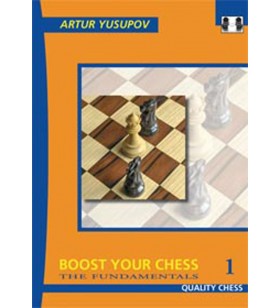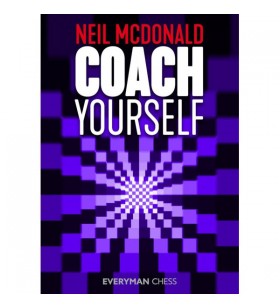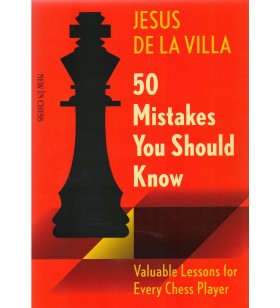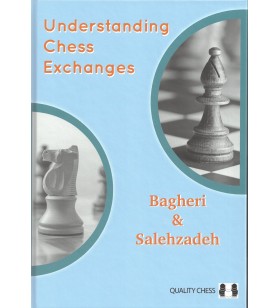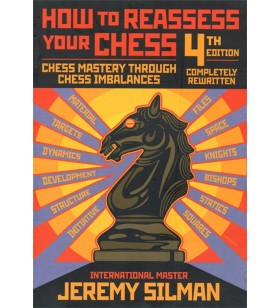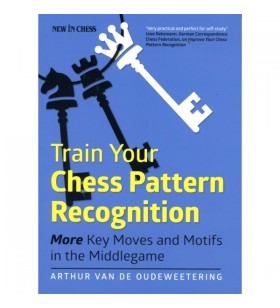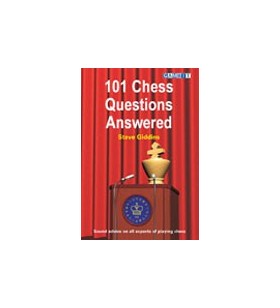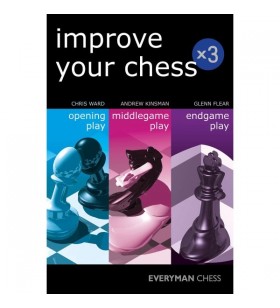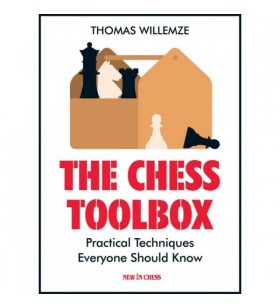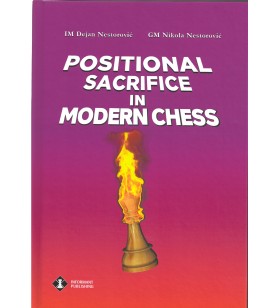- CHESS
- Chess boards and pieces
- Chess books
- Chess books in English and others
- Opening books
- The Ruy Lopez
- Other open games
- Other semi-open games
- The Sicilian
- French Defence
- Pirc & Modern Defence
- Caro-Kann
- Queen´s Gambit
- Slav Defence & Semi-Slav
- Other closed games
- Other semi-closed games
- King´s Indian Defence
- Nimzo & Queen´s Indian
- Grünfeld
- English Opening
- Dutch Defence
- Miscellaneous openings
- General and repertoire books
- Endgame books
- Books on grandmasters
- Books on tournaments
- Books in Dutch
- Miscellaneous
- Chess magazines
- General and middle game books
- Opening books
- Chess books in French language
- Chess books in English and others
- Chess software and DVDs
- Chess computers
- Equipment for clubs
- BOARD & BRAIN GAMES
- GO
- BRIDGE & CARDS & TAROT
- POKER & CASINO GAMES
- PUZZLES & BRAIN TEASERS
- DARTS
Sadler -Study Chess with Matthew Sadler
 Livraison sous 48 heures via Bpost*
Livraison sous 48 heures via Bpost*
Livraison gratuite à partir de €69 (Belgique, France, Pays-Bas, Luxembourg, Allemagne)
 You can cancel your order
You can cancel your order
For fourteen days!
 Secure payments
Secure payments
All payment cards accepted.
16 other product
De la Villa - 50 Mistakes You Should Know
It is not the quality of your best moves that wins you games; it is the quality of your worst moves. The quickest way to improve your chess skills is to raise the bar.The Spanish grandmaster and coach Jesus de la Villa has proven with his best-seller 100 Endgames You Must Know that he understands exactly what a chess student needs. Building on his experience as a writer and as a coach for juniors, he has carefully selected the 50 Mistakes every player should be aware of - so the mistake can be avoided. De la Villa loves this quote from the American First Lady, Eleanor Roosevelt: 'Learn from the errors of others. You can't live long enough to make them all yourself.' For over a decade, De la Villa has closely observed the Spanish junior championships, noting the recurring errors that players make. He has taken notes, classified these errors, and created training tasks based on them. From this wealth of chess exercises, he has selected the most impactful and has added recommendations how to correct the error.Your performance will improve dramatically because this book offers you: -50 important chess lessons-detailed and lively explanations-clear summaries and recommendations-dozens of tests. 351 pages
Bagheri/Salehzadeh - Understanding chess Exchanges
Understanding Chess Exchanges by Bagheri & Salehzadeh. Have you ever wondered how chess grandmasters always seem to know which pieces need to be exchanged? Or how an attack is influenced by the number of pieces on the board? When should we keep the queens on, and when should we switch to an endgame?
Understanding Chess Exchanges shares expert insights into using exchanges as a strategic weapon. Your newfound knowledge will then be tested using exercises taken from elite modern practice. With a particular focus on Magnus Carlsen – the master of exchanges – this book reveals the principles behind a vital part of chess strategy.
Chess mastery is the art of knowing when principles should be followed and when they must be broken. This book guarantees that you will not only become familiar with the typical guidelines, but also learn about their exceptions. Filled with tips, principles and practical advice, Understanding Chess Exchanges is an invaluable asset to a chess player’s arsenal! 352 pages
SILMAN - How to Reassess your Chess 4th Edition
OUT OF STOCK
How to Reassess Your Chess is the popular step-by-step course that will create a marked improvement in anyone's game. In clear, direct language, Silman shows how to dissect a position, recognize its individual parts and ultimately find the move that conforms to the needs of that particular situation. By explaining the thought processes that go into a master's choice of move, the author presents a system of thought that makes advanced strategies seem clear, logical and at times even obvious. How the Reassess Your Chess offers invaluable knowledge and insight that cannot be found in any other book. 650 pages
De Macht van het Loperpaar
Nestorovic - Positional sacrifice in modern chess
Positional Sacrifice in Modern Chess (hardcover). A Word from the Authors : "The sequel, or the second part of the “Secrets of Positional Sacrifice” manual is titled “Positional Sacrifice in Modern Chess”. We assume that readers will conclude that the subject of our analysis are recently played games, especially the games played over the last few years. The book is intended for chess players who aspire to raise the level of positional play in this particular field of expertise, as well as coaches working on chess education. Like the previous book “Secrets of Positional Sacrifice”, the book in our hands is divided into chapters according to the material that is the subject of the sacrifice: the positional sacrifice of a pawn, exchange, piece, rook, and queen. Finally, the last chapter deals with “hot games” and contains six games played during November and December 2021. We believe that the book is as interesting and instructive as its prequel. However, the examples are a tad more complicated, primarily because of the positional rook sacrifice section. In actual fact, the examples on this kind were verydifficult to find in practice, and processing them in the right way was a particular challenge for us. The first section, the positional pawn sacrifice, should encourage the reader to execute one of the most complicated positional sacrifices in practice as often as possible. On the other hand, the sacrifice of exchange is the most common and easiest to apply and can very successfully serve as a means of relieving the fear of possible sacrifice of material. Asymmetric positions, i.e., positions with an unusual distribution of material, are mostly featured in the positional piece and queen sacrifice positions. In the last chapter entitled “Hot Games,” we present the analysis on the topics of various fascinating examples, from the latest games of today’s great players. We tried to choose the examples that were easy to follow, so they are embellished with diagrams and explained verbally as well. We paid more attention to the analysis of the positional sacrifice from the moment of its execution to the end of the game. Hence, the introductory part of each example may be somewhat shorter in relation to the first book. Finally, the invaluable exercises at the end of the book should be mentioned. The tasks cover four topics to make them as interesting and easy to solve as possible. The exercises are based on the correct assessment of asymmetric positions and, of course, on concrete calculations. In conclusion, we would like to emphasize that the book highlights the beauty of human ideas and their practical application. In some cases, the authors give preference to the human idea over the assessment of the computer. When a player cannot calculate complicated lines accurately, he should look for an alternative solution of the similar quality. One of the possible answers is the positional sacrifice that leads to asymmetric material and thus the change of the character of the fight. " 307 pages

 Français
Français Nederlands
Nederlands English
English

